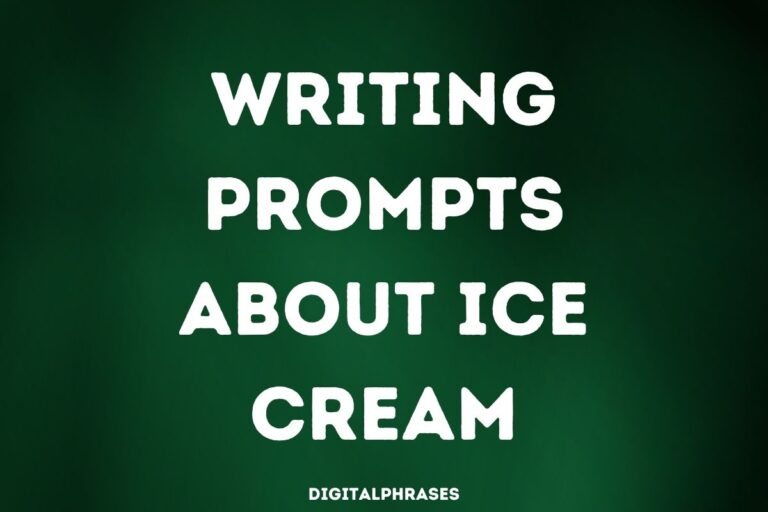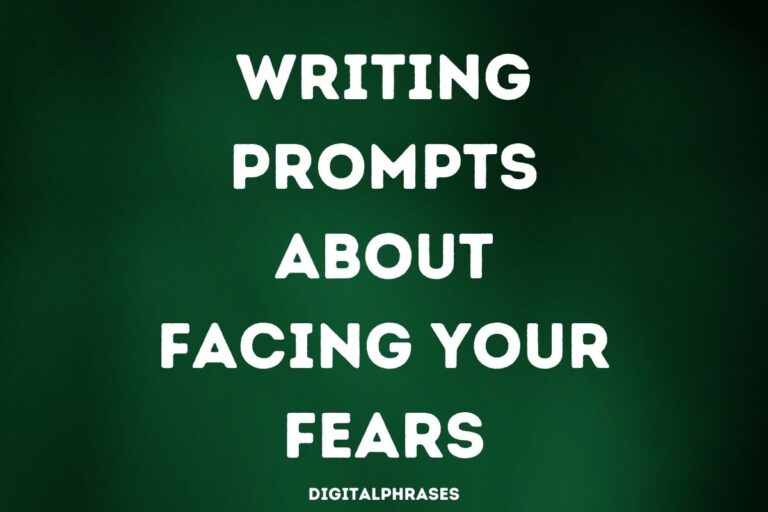32 Math Writing Prompts
Numbers are pretty cool, right?
They help us figure stuff out and make the world work. But did you know they can also be super creative?
We’re talking stories, poems, and all sorts of awesomeness hidden inside those equations and shapes.
It’s like a mashup of math skills and storytelling. So whether you’re a math whiz or a writing wizard (or maybe a little bit of both!), these prompts are the perfect way to explore the fun side of numbers.
Let’s unlock the stories waiting to be told in this mathematical maze!
Math Writing Prompts
The Historical Context of Zero: Delve into the historical significance of the number zero. Explore its origins in ancient cultures, such as the Mayans and Indians, and discuss how its introduction changed mathematical operations and thought. Consider how the absence of the concept of zero might have affected calculations and science.
The Art of Estimation: Discuss the importance of estimation in daily life and in various professions. Dive into techniques for making efficient and accurate estimations, and why sometimes a good estimate can be more valuable than an exact calculation. Reflect on situations where estimation could lead to critical decision making.
Fractals in Nature: Investigate the mysterious and beautiful world of fractals. Describe where they appear in nature, like in ferns, coastlines, and snowflakes, and discuss the mathematics behind these patterns. Consider how understanding fractals can help us comprehend the larger patterns in our universe.
Mathematics in Architecture: Explore how architects use mathematics to design stable, functional, and aesthetically pleasing structures. Discuss specific architectural wonders, like the Parthenon or modern skyscrapers, and the mathematical principles behind their construction. Reflect on the blend of art and math in architectural designs.
Probability in Game Theory: Dive into the intriguing world of game theory and how probability plays a crucial role in decision-making scenarios. Discuss famous problems like the Monty Hall problem or the Prisoner’s Dilemma, and how understanding probability can lead to unexpected outcomes.
Golden Ratio: Math’s Aesthetic Appeal: Delve into the fascinating world of the Golden Ratio and its prevalence in art, architecture, and nature. Explain the mathematical concept behind this ratio, and discuss why it is often considered the “most beautiful” or “most aesthetically pleasing” proportion by many cultures.
Mathematics of Cryptography: Discuss the role of mathematics in creating and breaking cryptographic codes. Dive deep into historic methods like the Caesar Cipher and modern encryption techniques. Reflect on the importance of cryptography in ensuring online security in today’s digital age.
The Impact of Algorithms on Society: Explore the increasing influence of algorithms, from social media feeds to financial systems. Analyze the mathematical principles behind these algorithms and discuss both their benefits and potential drawbacks. Consider the ethical implications of relying heavily on algorithm-driven decisions in various sectors of society.
Mathematics in Music Composition: Delve into the relationship between musical harmony and mathematical ratios. Explore how composers have utilized mathematical sequences, like the Fibonacci sequence or Pi, in their compositions. Discuss the significance of rhythm, scale, and harmony in the context of mathematical structures and patterns.
Epidemiology and the Math Behind Disease Spread: Investigate the mathematical models that help predict the spread of diseases. Discuss the significance of the reproduction number (R₀) and its role in determining the potential for pandemic outbreaks. Reflect on how understanding these models influences public health decisions.
Mathematics in Cartography and Map Projections: Examine the role of math in transforming our 3D world onto 2D maps. Discuss various map projections, their strengths and weaknesses, and the distortions inherent in each. Consider how these mathematical tools have shaped our understanding of the world’s geography.
Chaos Theory and the Butterfly Effect: Delve into the world of chaos theory and its most famous metaphor: the butterfly effect. Discuss how small changes in initial conditions can lead to vastly different outcomes in complex systems. Reflect on implications of this theory in weather forecasting, biology, and even finance.
Mathematics Behind Financial Markets: Explore the quantitative models that drive decision-making in stock markets and banking. Discuss concepts like Black-Scholes formula, risk assessment, and market predictions. Reflect on the 2008 financial crisis and the role of complex mathematical models in market dynamics.
Tessellations and Symmetry in Art: Investigate the concept of tessellations, patterns of shapes that fit perfectly together without gaps or overlaps. Explore famous tessellation artists like M.C. Escher and the mathematical concepts behind their works. Reflect on how mathematics can inspire art and vice versa.
The Growth of Populations: Exponential vs. Logistic Models: Dive into the mathematical models that describe how populations grow over time. Discuss the differences between exponential growth, seen in unchecked populations, and logistic growth, where a population stabilizes. Consider implications for ecology, conservation, and resource management.
Topology: The Study of Shapes and Spaces: Introduce the concept of topology, a branch of mathematics that studies properties of space that are preserved under continuous transformations. Discuss fascinating ideas like Möbius strips and Klein bottles. Reflect on the applications of topology in areas ranging from data analysis to quantum physics.
The Paradoxes in Mathematics: Delve into intriguing mathematical paradoxes like the Banach-Tarski paradox, Russell’s paradox, or the birthday paradox. Explore their implications and what they reveal about the foundations of mathematics. Reflect on the idea that some problems, though counterintuitive, can be rigorously proven using mathematical logic.
The Mathematics of Voting Systems: Examine different voting systems, such as first-past-the-post, ranked-choice, and the Borda count. Explore the mathematical nuances of each method and their potential advantages and drawbacks. Discuss Arrow’s impossibility theorem and its implications for designing a “perfect” voting system.
Sacred Geometry: Math in Spiritual Symbols: Investigate the use of geometry in sacred and spiritual symbols across various cultures, like the Flower of Life or the Sri Yantra. Discuss the significance of these geometric patterns and the mathematical concepts behind them. Reflect on the intersection of spirituality and mathematics.
Mathematical Modelling in Climate Science: Dive into the world of mathematical models that predict climate change and its impacts. Discuss the variables considered, how these models are constructed, and the challenges in making long-term predictions. Reflect on the role of mathematics in shaping global climate policies.
The Math Behind Social Networks: Explore the algorithms and mathematical structures that drive social networking platforms. Discuss concepts like six degrees of separation, network clustering, and the algorithms that determine “friend” suggestions. Reflect on the power and pitfalls of using mathematical models to shape social interactions.
Non-Euclidean Geometries and Their Implications: Introduce the concept of non-Euclidean geometries, such as hyperbolic and elliptical geometry. Discuss how they differ from classical Euclidean geometry and the groundbreaking realization that multiple geometries can coexist. Reflect on the applications and significance of these geometries in modern physics, especially in the theory of relativity.
Optimization: The Mathematics of Efficiency: Delve into the field of optimization, where mathematics is used to determine the best possible solution from a set of feasible options. Explore its applications, from logistics and supply chain management to machine learning algorithms. Reflect on how optimization shapes industries and modern life.
Infinite Series and Their Convergences: Explore the world of infinite series, sequences of numbers that can, when summed, converge to a specific value. Discuss famous series like the harmonic series, geometric series, or the paradoxical results of the Grandi’s series. Reflect on the challenges and insights of dealing with infinity in mathematics.
Origami: The Geometry of Paper Folding: Dive into the mathematical principles underlying the art of origami. Discuss the geometrical transformations involved, from simple folds to complex structures like the Miura fold. Reflect on how origami has inspired real-world applications, such as deployable solar panels in space.
The Mathematics of Knot Theory: Investigate the intricate world of knots from a mathematical perspective. Explore the challenges of distinguishing between different knot types and the importance of invariants. Discuss the surprising applications of knot theory in areas such as DNA research and quantum physics.
The Monty Hall Problem: Counterintuitive Probability: Delve into the Monty Hall problem, a classic probability puzzle that has stumped and intrigued many. Discuss the counterintuitive solution and explore the underlying principles of conditional probability. Reflect on why human intuition often clashes with mathematical logic in certain scenarios.
Sierpinski Triangle and Self-Similarity: Investigate the Sierpinski triangle, a fractal with the property of self-similarity. Explore the iterative process that generates this geometric shape and delve into its properties. Discuss broader implications of self-similarity in other fractals and natural phenomena.
The Traveling Salesman Problem and Computational Complexity: Introduce the Traveling Salesman Problem, a classic optimization puzzle, and discuss its significance in the field of computational complexity. Reflect on the challenges of finding efficient solutions to such NP-hard problems and the implications for fields like logistics and circuit design.
Benford’s Law: The Leading Digit Phenomenon: Explore Benford’s Law, a curious observation about the frequency distribution of leading digits in many sets of numerical data. Discuss its applications in areas like fraud detection and the mathematical explanation behind its occurrence in natural datasets.
Pascal’s Triangle and Its Hidden Patterns: Delve into the mysteries of Pascal’s Triangle, a simple yet profound mathematical construct. Discuss its connections to combinatorics, probability, and even fractal patterns. Reflect on how such a simple arrangement of numbers can encapsulate diverse mathematical ideas.
The Four Color Theorem: Coloring Maps: Introduce the Four Color Theorem, a statement about the maximum number of colors needed to color any map so that no two adjacent regions share the same color. Discuss its history, the challenges it presented, and its eventual proof using computer assistance. Reflect on the interplay of traditional mathematics and computational methods in modern proofs.

![24 D&D Writing Prompts [Dungeons & Dragons] D&D Writing Prompts [Dungeons and Dragons]](https://digitalphrases.com/wp-content/uploads/2023/08/21-768x512.jpg)




